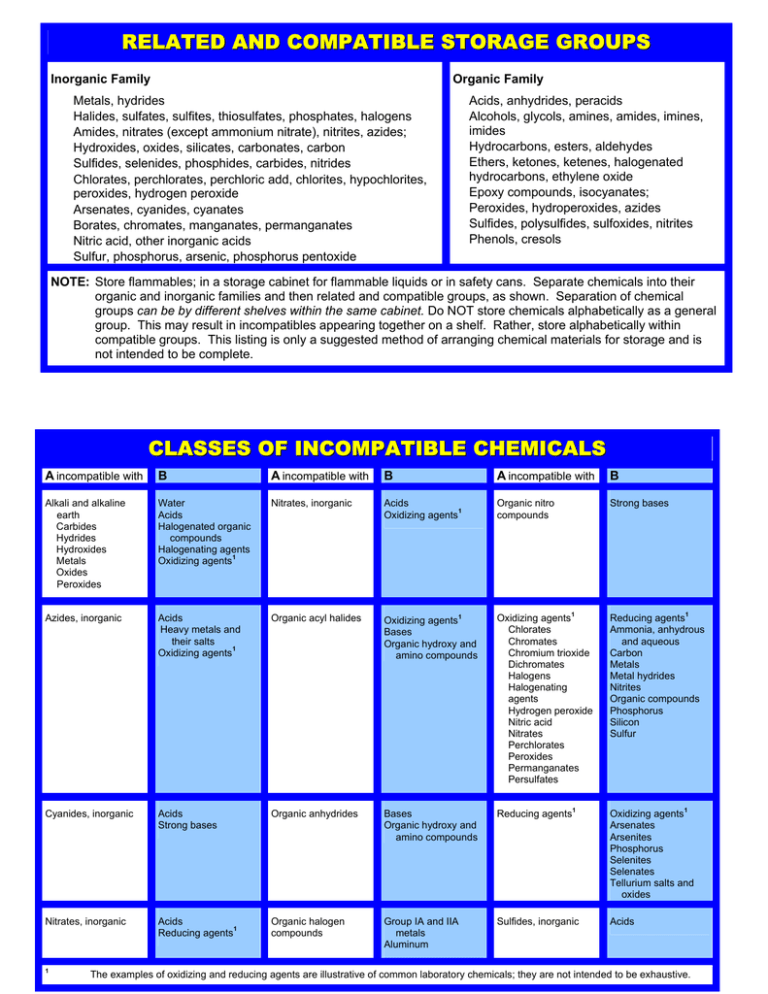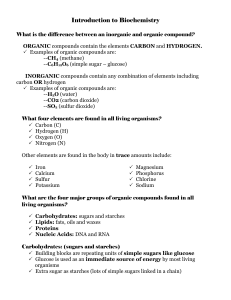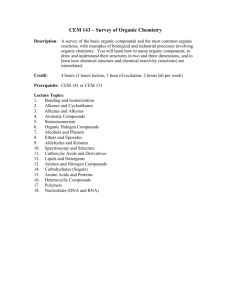R E L
advertisement

RELATED AND COMPATIBLE STORAGE GROUPS Organic Family Inorganic Family Metals, hydrides Halides, sulfates, sulfites, thiosulfates, phosphates, halogens Amides, nitrates (except ammonium nitrate), nitrites, azides; Hydroxides, oxides, silicates, carbonates, carbon Sulfides, selenides, phosphides, carbides, nitrides Chlorates, perchlorates, perchloric add, chlorites, hypochlorites, peroxides, hydrogen peroxide Arsenates, cyanides, cyanates Borates, chromates, manganates, permanganates Nitric acid, other inorganic acids Sulfur, phosphorus, arsenic, phosphorus pentoxide Acids, anhydrides, peracids Alcohols, glycols, amines, amides, imines, imides Hydrocarbons, esters, aldehydes Ethers, ketones, ketenes, halogenated hydrocarbons, ethylene oxide Epoxy compounds, isocyanates; Peroxides, hydroperoxides, azides Sulfides, polysulfides, sulfoxides, nitrites Phenols, cresols NOTE: Store flammables; in a storage cabinet for flammable liquids or in safety cans. Separate chemicals into their organic and inorganic families and then related and compatible groups, as shown. Separation of chemical groups can be by different shelves within the same cabinet. Do NOT store chemicals alphabetically as a general group. This may result in incompatibles appearing together on a shelf. Rather, store alphabetically within compatible groups. This listing is only a suggested method of arranging chemical materials for storage and is not intended to be complete. CLASSES OF INCOMPATIBLE CHEMICALS A incompatible with B A incompatible with B A incompatible with B Alkali and alkaline earth Carbides Hydrides Hydroxides Metals Oxides Peroxides Water Acids Halogenated organic compounds Halogenating agents 1 Oxidizing agents Nitrates, inorganic Acids 1 Oxidizing agents Organic nitro compounds Strong bases Azides, inorganic Acids Heavy metals and their salts 1 Oxidizing agents Organic acyl halides Oxidizing agents Bases Organic hydroxy and amino compounds Oxidizing agents Chlorates Chromates Chromium trioxide Dichromates Halogens Halogenating agents Hydrogen peroxide Nitric acid Nitrates Perchlorates Peroxides Permanganates Persulfates Cyanides, inorganic Acids Strong bases Organic anhydrides Bases Organic hydroxy and amino compounds Reducing agents Nitrates, inorganic Acids 1 Reducing agents Organic halogen compounds Group IA and IIA metals Aluminum Sulfides, inorganic 1 1 1 Reducing agents Ammonia, anhydrous and aqueous Carbon Metals Metal hydrides Nitrites Organic compounds Phosphorus Silicon Sulfur 1 1 Oxidizing agents Arsenates Arsenites Phosphorus Selenites Selenates Tellurium salts and oxides 1 Acids The examples of oxidizing and reducing agents are illustrative of common laboratory chemicals; they are not intended to be exhaustive.





